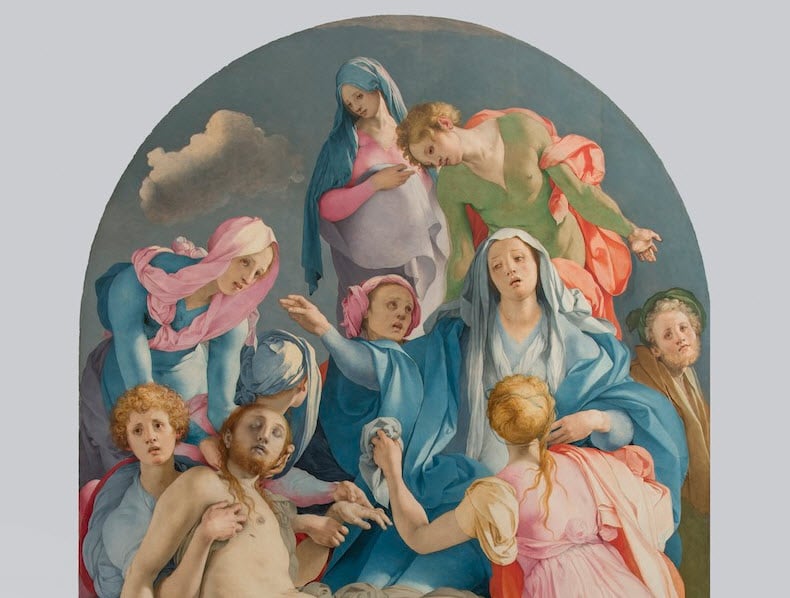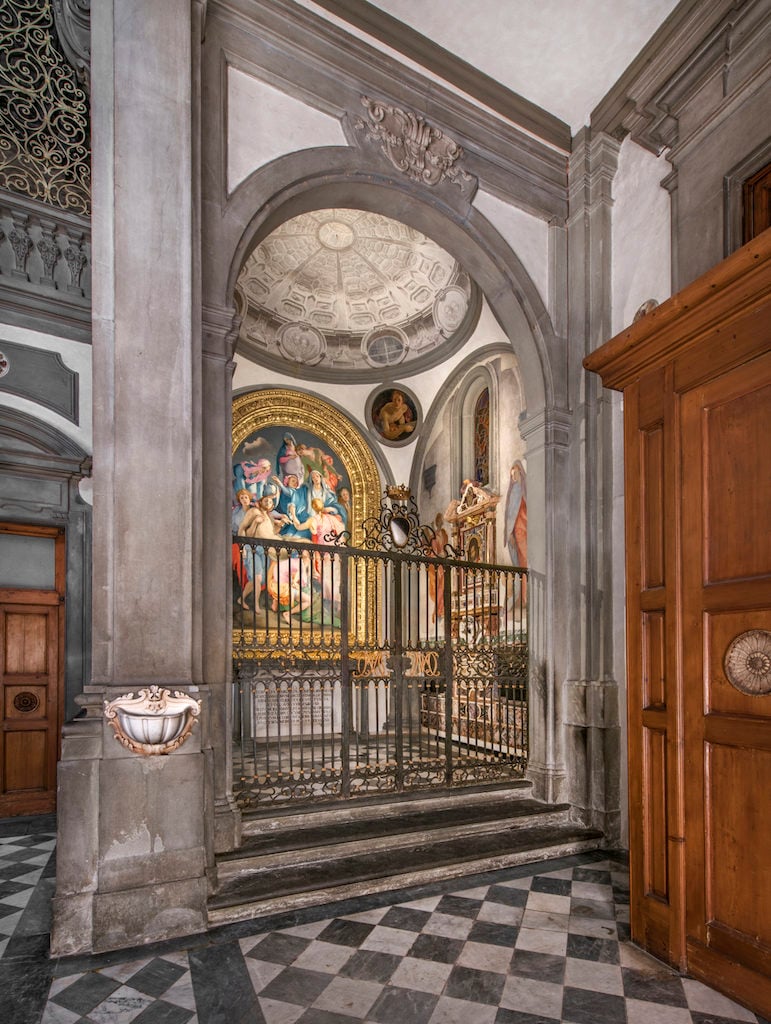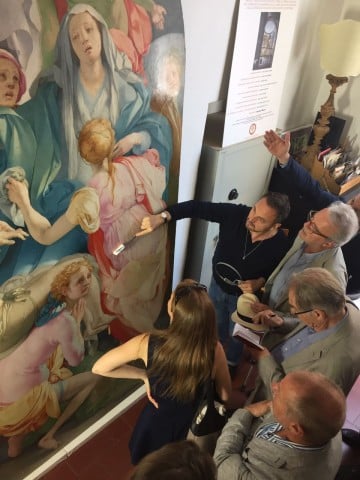Art World
Once Filled With Crumbling Masterpieces, a 16th-Century Chapel in Florence Reopens After Painstaking Conservation
The American nonprofit Friends of Florence stepped in to restore the chapel that's home to Renaissance masterpieces.

The American nonprofit Friends of Florence stepped in to restore the chapel that's home to Renaissance masterpieces.

Henri Neuendorf

The restoration of Filippo Brunelleschi’s magnificently designed 16th-century Capponi Chapel in Florence has finally been completed after a year of restoration work that was spearheaded by an American non-profit.
In the absence of sufficient domestic funding, Kathe and John Dyson of the Friends of Florence organization bankrolled the comprehensive cleaning and refurbishment that included Jacopo Pontormo’s mannerist altarpiece.
The Capponi Chapel, housed in the church of Santa Felicita, was commissioned by the Barbadori family around 1422 and later purchased by the nobleman and banker Lodovico di Gino Capponi in 1525 to serve as the family mausoleum. A year later, Capponi hired Pontormo to paint the interiors. The artist and his assistant Agnolo Bronzino sequestered themselves in the chapel for two years, barring access for everyone, even their patron, while they worked.

Church of Santa Felicita after the 2017 restoration with support from Friends of Florence. Photograph by Antonio Quattrone.
“The composition of the painting, the void, the fact that there’s no cross, no crucifix, makes this a really important work,” Kathe Dyson said of the altarpiece, which depicts Christ’s Deposition. “It really shows the end of the Renaissance moving into modern art. He [Pontormo] was a genius. It’s amazing after seeing all the Renaissance work, here’s somebody who changed the game.”
But after 490 years, Pontormo’s masterpiece came into a precarious state and was in desperate need of repair. Botched restorations and architectural interventions had taken their toll on the works to the point where two frescoes were starting to come off their wall supports. Extensive retouching and oxidized varnish dulled the colors, dust and soot buildup hid parts of the painting, and woodworms had eaten through some of the panels and frames.
“We just love Pontormo and we’d always gone to see this painting in the church,” Kathe Dyson remembers, but “it really needed to be restored.” Although the country has a long tradition of government support for the arts, its infrastructure for private giving is weaker, so the Dysons felt compelled to step in and preserve this unique treasure.
“Most people pass it by because it’s a little church and there’s no sign that says ‘fabulous Pontormo in this church,’” she said. “You just have to know.”
Working closely with Florence’s ministry of conservation, Friends of Florence co-founder Simonetta Brandolini d’Adda hired renowned Pontormo specialist Daniele Rossi to lead the project.
“The young restorer who did it is just a genius,” Dyson said. “Now it’s going to be lit correctly, it’s going to be cared for, there’s going to be no more candles, and they’re going to put a sign in the street for it. It’s exciting and we’re very happy. It was an honor to be able to do it.”
Brandolini d’Adda added, “We are delighted that the restoration has been successfully completed and that this magnificent treasure in the heart of Florence has reopened. The interior of the Chapel, ornamentation, and frescoes are now healthy and even more captivating.”

The Capponi Chapel during the 2017 restoration with support from Friends of Florence. Photograph by Antonio Quattrone.